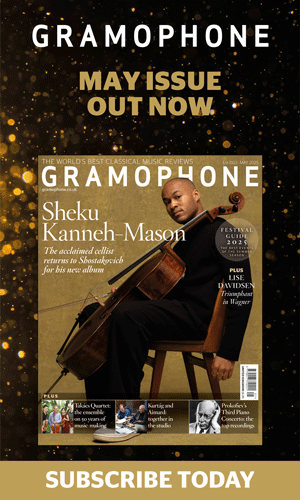Savitri staged in the Berghain techno club
Gramophone
Tuesday, May 18, 2010
Every weekend, Berlin’s most fabulous young things head to Berghain, where Berlin's most celebrated DJs spin way past dawn. For two nights last week, however, the world renown techno club housed in a former power plant, was the stage for an innovative production of Gustav Holst’s rarely seen opera Savitri.
On May 10 and 11, Simon Halsey, the choir’s director since 2001, presided over the chamber orchestra, choir and soloists who were set among the standing audience. Lars Schiebner’s production intriguingly blurred the boundaries between the opera and club scenes with greater success than other recent attempts to bring classical music into the mainstream. It was far and away a more serious endeavour than a “Sex and the City”-themed production of Così fan tutte that was mounted in another power-plant-turned-techno-club last November.
Holst wrote Savitri in 1916, in the grip of his obsession with Hindu mysticism. The composer taught himself Sanskrit in order to write a libretto based on an episode in the Mahabharata. Scored for three soloists, a female choir and fewer than a dozen instruments, this is a subdued, meditative and haunting work. The vocal writing for the principals hinges on the Wagnerian, while the instrumental and choral elements are free from any similar bombast. The prominent yet wordless chorus seems to represent the veil of Maya, the Hindu belief that all existence is mere illusion.
The Rundfunkchor Berlin, the oldest radio choir in Germany, regularly collaborates with Berlin’s leading musical institutions. The production of Savitri is part of the choir’s series, “Broadening the Scope of Choral Music”, which attempts to expand the appeal of choral music beyond traditional audiences.
At Berghain, the crowd congregated on the main dance floor until gradually shepherded upstairs accompanied by Holst’s “Choral Hymns from the Rig Veda” performed by choristers imbedded in the audience. Light amplification was used for the soloists, whose voices needed to contend with concrete walls as high as a cathedral.
Low-ticket costs, lack of chairs, and fluidity between performers and audience, were only a few of the ways in which Schiebner’s production subverted several assumptions about how we consume serious music. In a city where Regietheater productions so often result in pointless updatings, it was both refreshing and exciting to see a seriously experimental attempt at transforming the classical music experience.
Holst intended for Savitri to be performed “in the open air, or else in a small building." I’d like to think that he would give this production his approval.
AJ Goldmann







